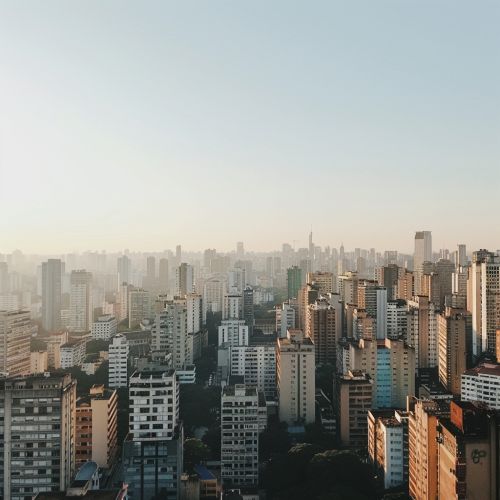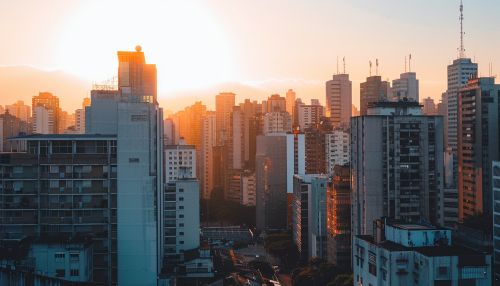Fifth-Largest City in the World
Introduction
The title of the fifth-largest city in the world is a dynamic and often debated topic due to the varying metrics used to measure city sizes, such as population, area, and economic output. This article will delve into the complexities of defining and identifying the fifth-largest city in the world, focusing primarily on population as the key metric. We will explore the historical growth, demographic trends, urban planning, and socio-economic factors that contribute to the ranking of these megacities.
Defining City Size
Population
Population is the most common metric used to rank cities. However, even within this category, there are different ways to measure population:
- **City Proper**: The population within the administrative boundaries of the city.
- **Urban Area**: The population within the continuous urbanized area, regardless of administrative boundaries.
- **Metropolitan Area**: The population within the metropolitan region, including surrounding towns and suburbs.
Each of these measurements can yield different results for the ranking of the fifth-largest city.
Geographic Area
Another way to measure city size is by geographic area. This can include the total land area within the city proper or the metropolitan area. However, this metric is less commonly used for ranking purposes.
Economic Output
Economic output, measured by Gross Domestic Product (GDP), is another metric that can be used to rank cities. This metric focuses on the economic activities within the city and its surrounding areas.
Historical Growth
The historical growth of cities is influenced by various factors, including industrialization, migration, and economic opportunities. Cities like Tokyo, New York City, and Shanghai have seen rapid growth due to industrialization and economic opportunities, attracting millions of people from rural areas and smaller towns.
Industrialization
The Industrial Revolution played a significant role in the growth of many cities. For example, London and New York City experienced significant population increases during the 19th and early 20th centuries due to industrialization.
Migration
Migration, both internal and international, has been a major factor in the growth of cities. Cities like Mumbai and São Paulo have seen significant population increases due to rural-to-urban migration.
Economic Opportunities
Economic opportunities in sectors such as finance, technology, and manufacturing have attracted people to cities. For example, Shanghai has become a global financial hub, attracting people from all over China and the world.
Demographic Trends
Demographic trends such as birth rates, death rates, and life expectancy also play a crucial role in the growth of cities.
Birth Rates
High birth rates contribute to population growth in many cities. For example, cities in developing countries often have higher birth rates compared to those in developed countries.
Death Rates
Improvements in healthcare and living conditions have led to lower death rates in many cities, contributing to population growth.
Life Expectancy
Increased life expectancy due to better healthcare and living conditions also contributes to the growth of cities.
Urban Planning
Urban planning is essential for managing the growth of cities. Effective urban planning can help address issues such as housing, transportation, and infrastructure.
Housing
Providing adequate housing is a significant challenge for rapidly growing cities. Cities like Mumbai and São Paulo face challenges related to slums and informal settlements.
Transportation
Efficient transportation systems are crucial for the functioning of large cities. Cities like Tokyo and New York City have extensive public transportation systems that help manage the movement of millions of people.
Infrastructure
Adequate infrastructure, including water supply, sanitation, and electricity, is essential for the functioning of large cities. Cities like Shanghai and Mumbai face challenges related to providing adequate infrastructure for their growing populations.
Socio-Economic Factors
Socio-economic factors such as income levels, employment opportunities, and quality of life also influence the growth and ranking of cities.
Income Levels
Higher income levels can attract people to cities. For example, cities like New York City and Tokyo have high income levels, attracting people from all over the world.
Employment Opportunities
Employment opportunities in various sectors such as finance, technology, and manufacturing attract people to cities. For example, Shanghai has become a global financial hub, attracting people from all over China and the world.
Quality of Life
Quality of life, including factors such as healthcare, education, and safety, also influences the growth of cities. Cities like Tokyo and New York City offer high quality of life, attracting people from all over the world.
Current Fifth-Largest City
As of the latest available data, the fifth-largest city in the world by population is São Paulo, Brazil. São Paulo is a major economic and cultural hub in Brazil and Latin America.
Population
São Paulo has a population of approximately 22 million people in its metropolitan area. The city proper has a population of around 12 million people.
Economic Significance
São Paulo is the financial capital of Brazil and one of the largest financial centers in the world. The city is home to the São Paulo Stock Exchange, the largest stock exchange in Latin America.
Cultural Significance
São Paulo is a major cultural hub, with numerous museums, theaters, and cultural institutions. The city hosts the São Paulo Art Biennial, one of the most important art exhibitions in the world.
Challenges
Despite its significance, São Paulo faces numerous challenges, including traffic congestion, pollution, and social inequality. The city has a large number of informal settlements, known as favelas, where living conditions are often poor.
Conclusion
The title of the fifth-largest city in the world is a dynamic and often debated topic due to the varying metrics used to measure city sizes. São Paulo, Brazil, currently holds this title based on population. The city's historical growth, demographic trends, urban planning, and socio-economic factors all contribute to its ranking. However, the challenges faced by São Paulo highlight the complexities of managing and sustaining large urban populations.


